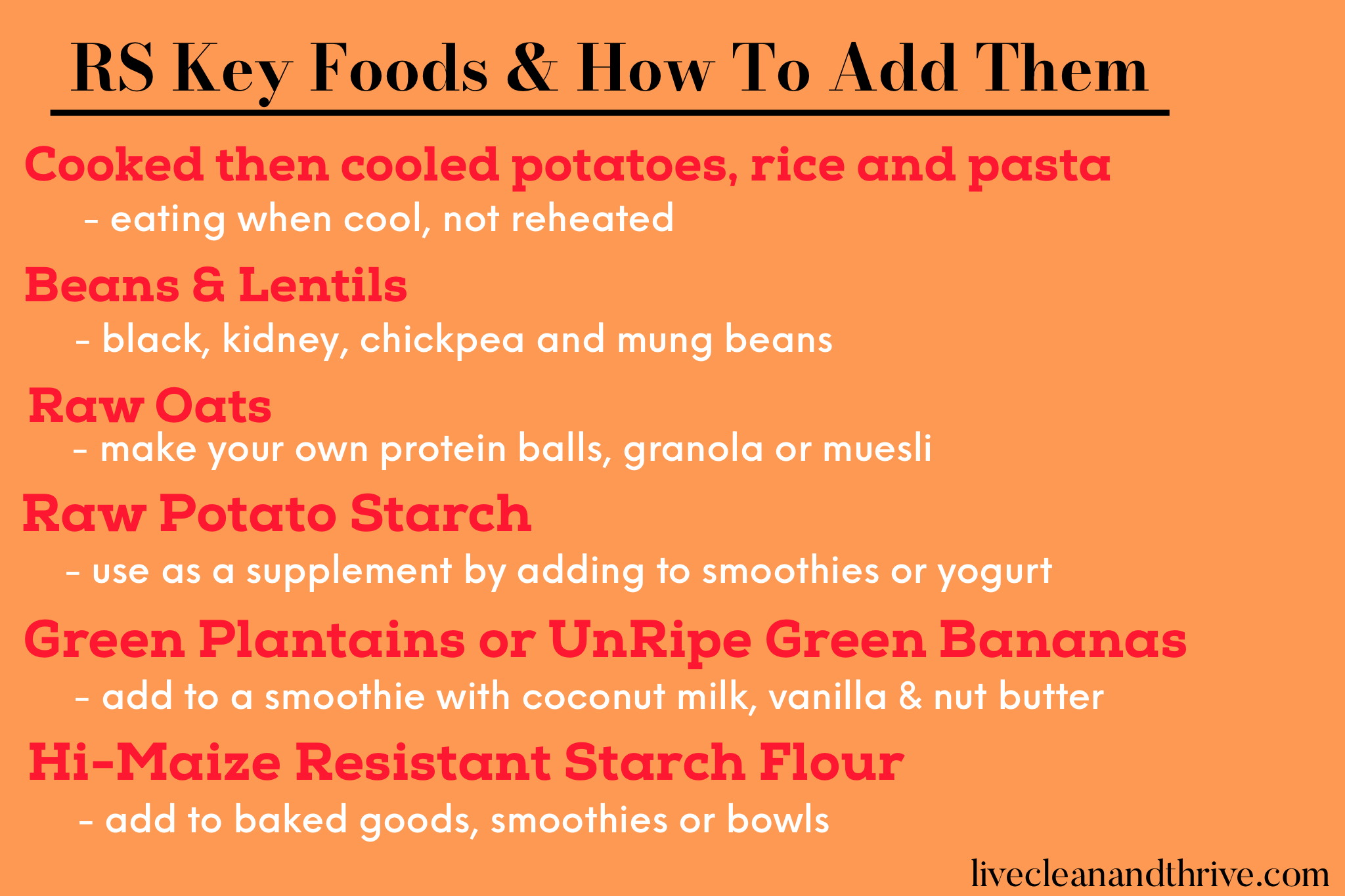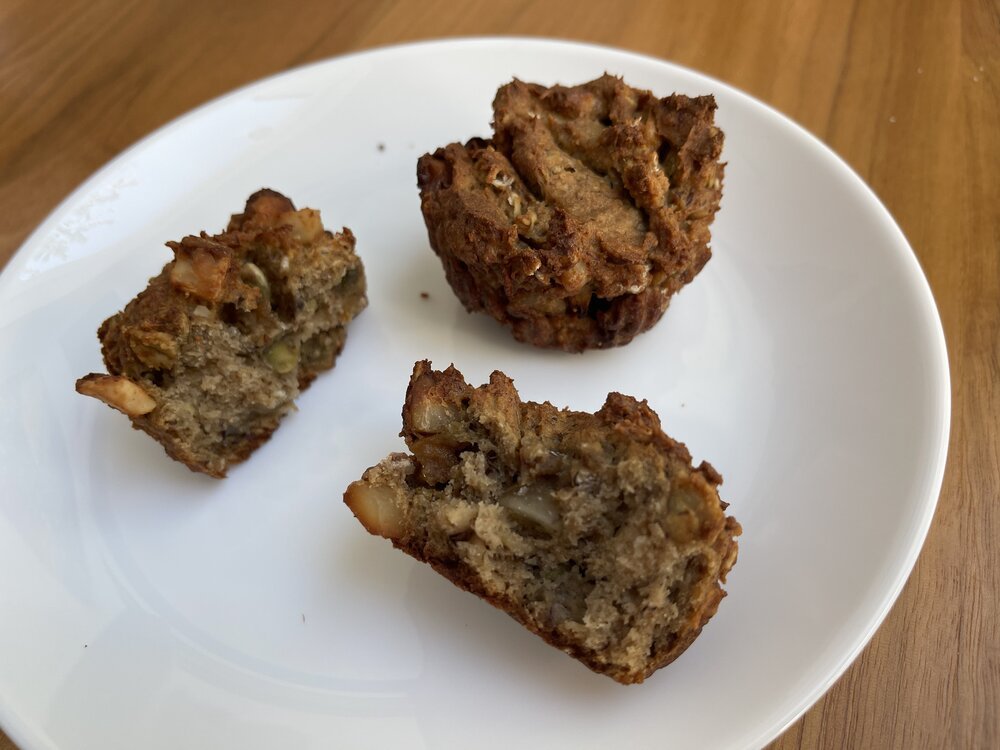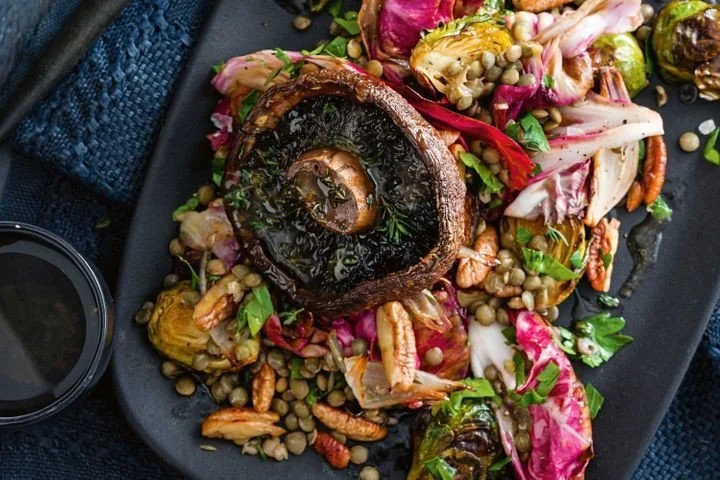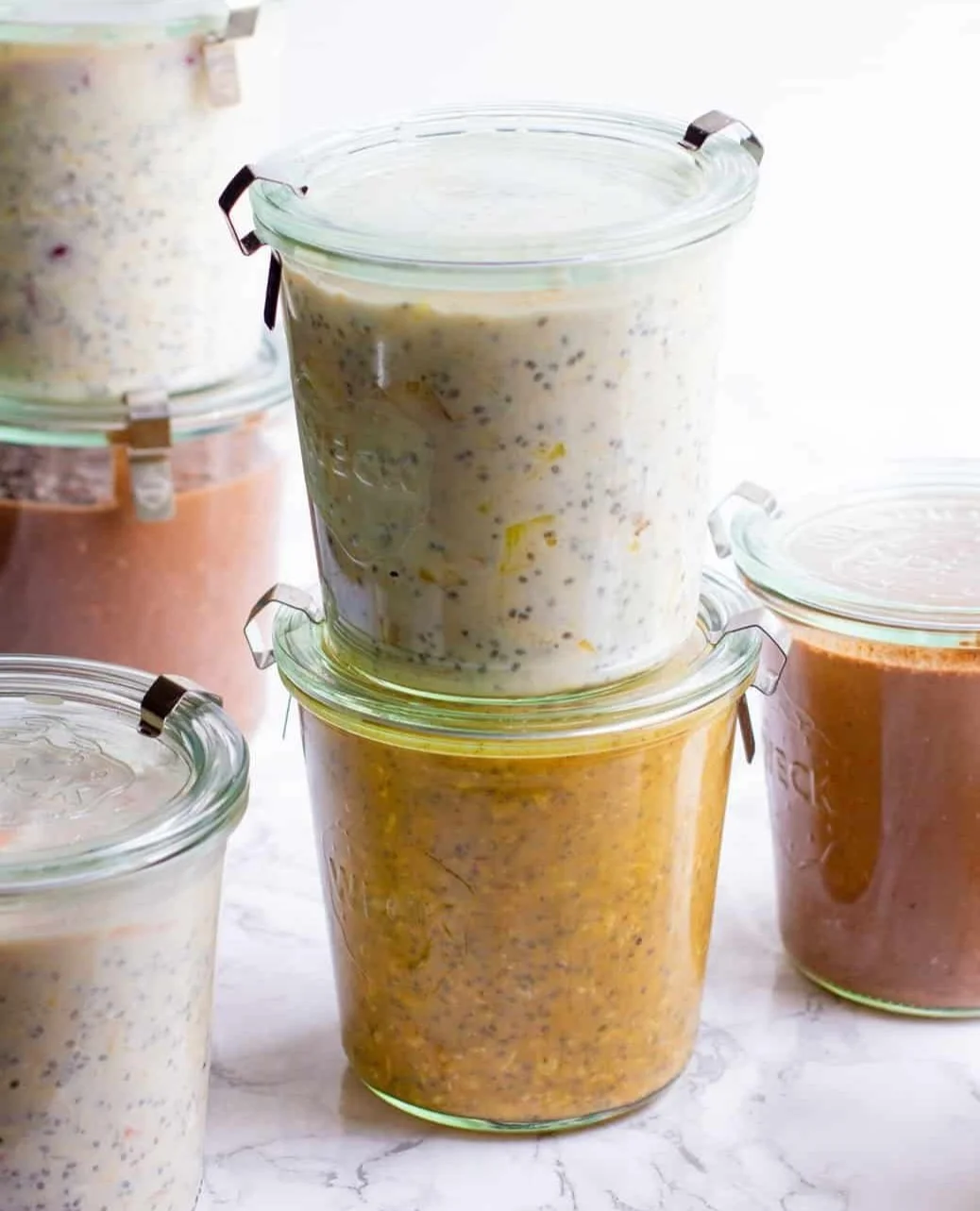Fiber - The Microbiomes Macronutrient
To start, our Microbiome is this expansive network in our gastrointestinal tract compromised of bugs, nerves, hormones and enzymes all with the goal of protecting your body from harm and extracting nutrients out of the food we eat to make energy and also every single cell of your body. Pretty awesome right?!
So these bugs, microbes, do some really incredible things like cleaning up digestive and cellular waste, fermenting any non-digested food, kill invading bad bacteria and they make short-chain fatty acids that help protect the intestinal wall lining and reduce inflammation. Incredible! Our GI tract contains over 400 bacterial species that do all this amazing work for you. Of those, there are three types of intestinal bacteria: beneficial, harmful, and opportunistic, each with different actions and effects on the body and your bodies proportion of reach type of bacteria change with age. I mentioned what the beneficial ones do above. The opportunistic are exactly that, when you’re healthly they are not a bother, but when the body becomes weak they see an opportunity to strike and claim power, with the result of adverse actions inside the intestines (lyme is a good example and possible the most prominent one of these bugs). Then we have the bad ones, you know about those aka pathogens that can cause digestive issues, health issues, could lead hospitalizations and even death. Maybe you’re thinking yeast infections or salmonella? Yes, but also small intestinal bacterial overgrowth (SIBO), Enterotoxigenic bacteria (E coli, V cholerae), there are also large-bowel pathogens (the major ones being Shigella and Campylobacter), other viruses and the parasite Giardia are just some examples of GI pathogen we don’t want to take residence in our bodies [s].
I like to think of our bodies as countries and the GI tract as border patrol (since it is the barrier we have to the outside environments). Our skin is the different geographic regions, deserts, mountains, wetlands…. Anyway your body is either welcoming and protective or a hostile ground full of war and suffering where building a wall around the perimeter is the only option to “keep invaders out.” Your bodies good bacteria are at the gates, fences and security patrolling the entrances. They are the helpful police offices and keepers of peace. When an invader enters, it could be ushered to a green pasture for removal. Course not all invaders are easily ushered out, sometimes they have to be flushed out quickly and rapidly. If you’ve ever had a severe reaction to a food you’ve eaten you know what I’m talking about. Rest assured, it’s just your bugs keeping you safe from larger harm.
Many of todays agriculture and food preparation practices interfere with the balance maintained between the various microbe types, creating a dysbiosis. Where too many good bugs are eliminated and too many bad ones are allowed to take over with free rein. We take antibiotics that kill good ones, we consume foods with toxic chemicals that injury or kill them (leading to endotoxemia), we pick up opportunistic from our environments, when we eat processed food and added sugar its promotes the growth of unbeneficial ones.
What can we do?
It’s simple, support our good bugs to keep them happy and healthy so they can serve their purpose in our bodies.
How?
When we have a wide diversity of good bugs that is the recipe for healthy metabolism and a healthy body. How do we get diversity? 1. By eating a diversity of fruits and vegetables. 2. Avoid using antibiotics and 3. Supplement your consumptions with external probiotics (stay tuned for details on which probiotics you should choose but the quick/easy answer is spore based, I love this one). The last and probably the most important is thing you can do to support those little bugs within is to understand that they are living creatures that need love and nutrition to survive.
How to nourish them (aka What do they eat? Prebotics aka Fiber)
Fiber is the non-digestible carbohydrate components of plants that move thought our system untatered making its way through the small intestine and into the large colon. We do not proses the enzymes to break fiber down because we evolved with these bacteria to do that for us! Such a beautiful design when you stop to contemplate it. We eat the plants to feed us and the bugs, the bugs eat the remains to repair, nourish and heal us. The probiotics use fiber as an incredibly nutritious macronutrient. The most commonly-studied prebiotics are the soluble fibers inulin, fructooligosaccharides (FOS), galactooligosaccharides (GOS), and human milk oligosaccharides (HMOs) and clinically they confirm positive effects on health including; reduction of infections, cardiometabolic health, mineral availability, and immune modulation [s].
Like our macro nutrients (Protein, Carbs and Fat), Dietary Fiber has different varieties but is generally divided into two main categories soluble and Insoluble.
Soluble - mixes with water to form a gel-like substance and is fermented by gut bacteria
Insoluble - remains intact and adds bulk, it absorbs fluid and sticks to other byproducts of digestion, its presence speeds up the movement and prevents blockage and constipation)
Looking closer, you'll find some further classifications based on their molecular structure. The ones you’ll most often encounter in your shopping visits are:
Pectin - a plant-derived polysaccharide which is found in cell walls allowing for cell wall extension and plant growth.
It is often used as gelling agent. Found in apples, garlic, onions, chicory root, jicama, artichoke & asparagus. Fun fact, as a fruit ripens pectin is broken down by enzymes to allow the fruit to become softer and sweeter.Inulin - another polysaccharides in a class of fibers known as fructans (a polymers of fructose). Inulin serves as the plants reserve of energy and for regulating cold resistance. Commercially it is frequently derived from chicory root and used as a fat substitute or sweetener. You’ll find it in wheat, onion, bananas, garlic, asparagus, jerusalem artichoke, agave and chicory.
Psyhllum Husk - is its own plant that contains a blend of soluble and insoluble fiber. It functions in humans by absorb excess water in the GI tract while stimulating normal bowel elimination [s].
Resistant Starch (overnight oats, cooked & cooled rice/potatos, sorghum, barley, wheat, beans & legumes, potato starch, green bananas). These are starches that resist digestion and arrive in the colon where they will be fermented by the gut microbiota (aka- good bugs meal).
More on this big player in the fiber kingdom, Resistance Starch. This one is the special sauce for those good bugs. There are 5 types;
Type 1 (RS1): These starches resist digestion, period. You can find RS1 in seeds, legumes, and whole or partially milled whole grains.
Type 2 (RS2): These are non-gelatinized granules. This means that the small intestine can slowly digest them, but not before much of them escape to the large intestine. You can find RS2 in green bananas, raw potatoes, and high amylose corn.
Type 3 (RS3): aka Retrograded Starch: When starchy foods, such as potatoes or rice are cooked they become fully hydrated allowing for the starch to be digested. When they cool, the starch changes from digestible to a resistant form of starch making it harder to digest (allowing our good bugs to digest them!). If you want to reap the prebiotic benefits then its best to eat these foods cold. When reheated, the starch returns to digestible form. RS3 can be found in cooled rice (white & brown), cooled potatoes, cornflakes, or processed foods.
Type 4 (RS4): These are chemically modified by human processing (in other words, man-made!) and can be difficult to digest. RS4 is the product of using chemically modified starches, so you can find it in more or less anything, including certain types of cereal. In food products they are used as thickening agent, stabilizer or emulsifier; in pharmaceuticals as a disintegrant; or as binder in coated paper.
Type 5 (RS5): – Starches that are complexed with lipids.
Okay eat fiber…How much Fiber? What about prebiotics?
Many health professional sites recommend consuming dietary fiber intakes of:
Women at least 21 to 25 grams a day,
Men 30 to 38 grams a day.
Of those, looking to get at least 15-20g per day of Resistant Starch.
RS1-RS3 will be the easiest to incorporate into your diet. You likely are already consuming some without even knowing it – win! So the question is, how much should be consuming? Integration of RS into the diet should be slow as the sudden change could cause some bloating or gas, especially if these foods are not commonly found in your diet already.
Prebiotics, though contained within dietary fiber, are different. Supplementing with just them is possible but there are not enough data to support how much these bugs really need. Many professionals suggest that eating 3 to 5 grams of prebiotics a day can benefit the health of your gut [s].
FYI: Based on recent surveys, the average American consumes 10 to 15 grams of total fiber per day. Which, is less than half of what they should be. We have plenty of room for improvement in this area especially with (all the above data) and more studies confirming the positive effects of consuming 25 or more grams of fiber per day for health including;
Besides Feeding those Happy Bugs you will get loads of other health benefits by consuming the RDA of Fiber, including;
Improved Digestive function (digestion and absorption of nutrients, transit time, stool formation) [s].
Improved Gut Microbiota composition and fermentation metabolites (producing more SCFA).
Improved Blood Glucose levels and insulin sensitivity [s].
Decreased Risk cardiac disease, stroke, type 2 diabetes, and/or colon cancer by 16% to 24%, compared to people who ate very little fiber.
Decreased risk of death from any cause by 23% (compared to those eating the least amount of fiber) [s]. Dietary fiber intake also lowered the risk of death from cardiovascular, infectious, and respiratory diseases by 24% to 56% in men and by 34% to 59% in women.
Decreased total cholesterol levels
Improved Weight Management
Recipes to get your Fiber on
Leeks with Walnuts & Tarragon
Roasted Asparagus
Giant Butter Bean Stew
Asparagus & Egg Salad
My Gut Jacked ColeSlaw
Breakfast Bread or Muffins
Other options besides increasing you plant intake
This is what I do, besides eating a lot of plants, I add prebiotic fiber it to my protein balls, smoothies and all baked goods, yes even pancakes and waffles. I need the fiber to counteract the maple syrup my kids pour on.
My Recommended Fiber Supplements:
GutHealth Prebiotic Fiber, has 12g of Soluble fiber per serving. The biggest bag for the buck for sure and since its soluble, you could mix it easily with water. Its non-GMO chicory root, pea fiber, apple pectin, orange fiber, beet fiber, citrus pectin.
Garden Of Life Organic Prebiotic Fiber, 5g of Fiber (4 soluble, 1 insoluble) per serving with 6g of Prebiotic Fiber Blend. This one stands up well to all my cooking practices. This USDA Organic, chicory root & psyllium husk free for those who may be sensitive to those components.
BulletProof INNERFUEL PREBIOTIC, 2 scoops give you 6g of fiber, but what's key is the sources of prebiotics including Larch Arabinogalactan, Organic acacia and Guar fiber.
Psyllium Husk Powder - this is a Natural Prebiotic & Provides Soluble & Insoluble Fiber. Works well with cooking too.
What to AVOID: Really, when you start looking you're going to see them everywhere, even CVS sells fiber. There are a couple to watch out for.
Benefiber Daily Prebiotic Fiber - I wouldn't recommend because the fiber is derived from wheat dextrin and the gluten could counteract any benefit of the fiber especially if your gluten sensitive.
Metamucil - which at face value contains “Psyllium Husk” which is good but also contained many unnecessary additives like sugar, artificial colors (yellow 6), sweeteners (Aspartame) and flavours (orange), which being artificial your body doesn’t know what to do with. Not coming from a plant there is no DNA which organisms need to read/decipher what to do with it. Your body treats it as a toxin and responds with an inflammatory response. There is a “Metamucil Free” which doesn’t have artificial ingredients but the first ingredient is sugar, and sugar, well, that is the greatest contributor to our GI dysbiosis [s]. So taking something to help your gut while also taking something to hurt it…. why bother? Choose something else.
Helpful Tips when Increasing Fiber:
- Please do this gradually, allowing time for your gastrointestinal tract time to adapt to the new meal options.
- As you increaser your fiber, also increase your water intake. No sense in creating the bulk when there isn’t much to flush it away.
While doing my research I tend to go off on little tangents, little rabbit holes of knowledge. I wasn’t able to include them in the content above but believe its still good into to know.
Tangent 1 : The two most beneficial groups of prebiotics are Fructo-oligosaccharides (FOS), galacto-oligosaccharides (GOS), and trans-galacto-oligosaccharides (TOS) because they have the most beneficial effects on human health[s]. Thing is there content in food is naturally very low. New science is underway trying to develop.
Tangent 2: There such a thing as Fructan Intollerance and it is often hard to clinically distinguish between Non-celiac gluten sensitivity (NCGS) as 70% of americans diets contain food with fructans, namely Wheat. The Foods that are high in fructans include wheat products—such as bread and pasta—onions, shallots, garlic, barley, cabbage, broccoli, pistachio, artichoke, chicory root, and asparagus [s].












